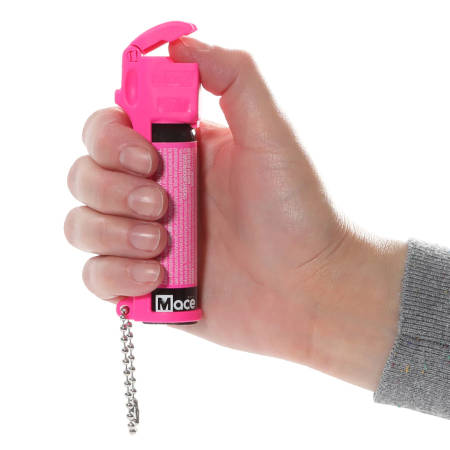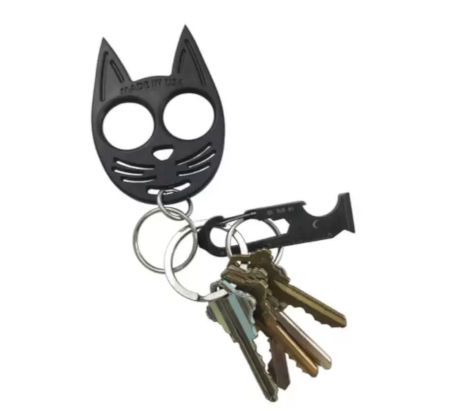Self Defense Options
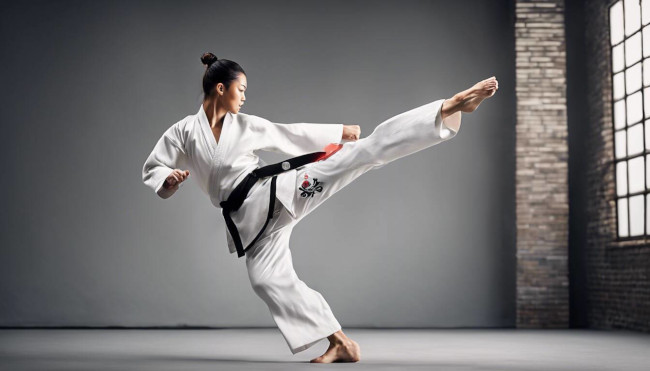
Being ready for unexpected threats is a key part of personal safety. There are numerous approaches you can take, such as learning de-escalation tactics and mastering simple physical maneuvers like wrist releases or joint locks. Access to non-lethal weapons like pepper sprays, stun guns, and personal alarms can also boost your confidence. These tools can temporarily incapacitate an attacker, providing you time to get away. Just remember, it's not just about the tools at hand, but how you use them effectively under pressure. Now let's dive into understanding the nuances of these tactics.
Effective self-defense options include pepper sprays, stun guns, TASER devices, and personal alarm keychains. These non-lethal tools are designed to provide security and confidence in various situations, empowering individuals to protect themselves and their loved ones.
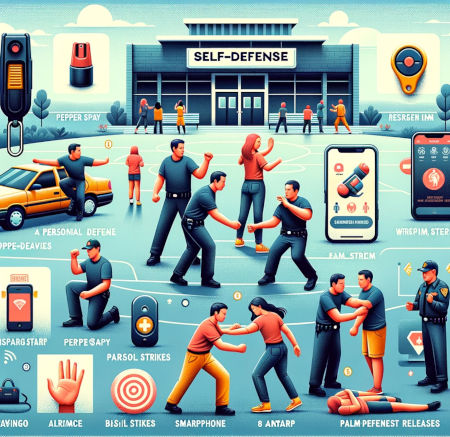
Non-Lethal Tactics
When it comes to self-defense, there's a misconception that it's all about physical combat and martial arts. But the truth is that effective self-defense often starts with prevention, de-escalation, and assertiveness. Non-lethal self-defense tactics encompass a wide range of strategies designed to neutralize a threat without causing permanent harm or injury. These tactics are not only effective but also essential for staying safe in confrontational situations.
One of the most important non-lethal tactics is verbal assertiveness. Using your voice assertively can de-escalate a situation before it turns physical. It's about being able to confidently communicate and set boundaries. This can be especially effective when dealing with verbal aggression or intimidation.
Another key area in non-lethal self-defense is understanding how to create distance from an aggressor through physical maneuvers like wrist releases or joint locks. These techniques are often taught in self-defense classes and can be extremely useful in various confrontational situations. They allow you to escape from a threatening situation without causing harm.
De-escalation strategies play a crucial role in diffusing potentially dangerous situations before they escalate. Understanding how to recognize escalating behavior and knowing how to respond calmly and appropriately can prevent a situation from turning violent.
Non-lethal self-defense tactics are about more than just physical strength; they're about empowering yourself with knowledge, awareness, and confidence. By learning these tactics, individuals become better prepared to protect themselves and others without resorting to violent measures.
Understanding the importance and range of non-lethal self-defense tactics sets the stage for equipping ourselves with knowledge and skills that prioritize safety while maintaining control in threatening situations.
Non-Lethal Weapons for Personal Safety
When it comes to personal safety, having the right tools at your disposal can make all the difference. Non-lethal weapons are a crucial part of any personal safety plan—they offer a means of defense without the lethality associated with traditional firearms. These tools have the potential to incapacitate an attacker temporarily, providing you with the crucial window of opportunity to escape from danger. Let's explore some of the most effective non-lethal weapons available for personal safety.
Pepper Spray
Pepper spray is a popular and effective self-defense tool that contains capsaicin, a chemical derived from chili peppers. When sprayed on an attacker, it causes temporary blindness, difficulty breathing, and skin irritation, allowing you to escape from dangerous situations. You can think of it as creating a defensive barrier between you and a potential threat.
Stun Guns
Stun guns are another widely used self-defense weapon that disrupts muscle control by delivering an electric shock to the body. This temporary loss of muscle control immobilizes an attacker, allowing you vital time to seek safety. While precision is not required with pepper spray, a stun gun needs a certain level of accuracy aiming for specific areas to disrupt an aggressor's muscle control effectively.
Personal Alarms
Personal alarms are often overlooked but serve as a powerful deterrent and alert system by emitting a loud, attention-grabbing sound when activated. This sudden burst of noise can startle an assailant, attract witnesses, or signal for help, providing valuable seconds for you to escape to safety.
Tasers
| Pros | Cons |
|---|---|
| Effective at a distance | Limited number of shots |
| Incapacitates target | Can be expensive |
| Reduces risk of physical confrontation | Requires proper use training |
TASER devices are similar to stun guns but can be used from a distance due to their shooting mechanism. They deliver an electrical shock that disrupts muscle function, offering protection from attackers without necessitating close physical proximity.
Keychain Protection Items
Keychain weapons have emerged as a popular and practical self-defense option for individuals looking to enhance their personal security in an unobtrusive yet effective manner. These small, easily portable devices can be carried inconspicuously on a keychain, ensuring they are readily accessible in times of need.
My Kitty Self-Defense Keychain
From sturdy kubotans to hard ABS plastic knives, keychain weapons offer a variety of forms to suit different preferences and situations. Their main appeal lies in the combination of convenience and readiness, allowing users to go about their daily activities with an added layer of protection.
Whether walking through a parking lot at night, jogging in early morning hours, or navigating crowded public spaces, having a keychain weapon or even a baton flashlight provides a sense of security and empowerment, making it an essential tool in the modern self-defense arsenal.
Each of these non-lethal options provides individuals with added protection in various scenarios, whether it's walking alone at night or navigating unfamiliar places. By incorporating these weapons into your personal safety strategy, you gain the confidence to move through the world while being prepared for unexpected threats, knowing that you have options for defending yourself without resorting to lethal force.
Furthermore, understanding how to physically defend yourself through martial arts techniques can add another layer of safeguarding against potential threats in various environments.
Martial Arts and Physical Defense Techniques

It's no secret that mastering a martial art brings an array of benefits beyond self-defense. For instance, Brazilian Jiu-Jitsu is a ground-based fighting system that focuses on leverage and technique instead of size and strength. This equips practitioners with the skills to defend themselves against larger opponents using joint locks and chokeholds to subdue adversaries without overpowering force.
Traditional martial arts, such as Taekwondo or Karate, are rooted in discipline, respect, and control, cultivating both mental fortitude and physical prowess. They teach individuals to regulate their responses under duress and focus on developing defensive skills as a last resort, emphasizing that true victory lies in de-escalating confrontations whenever possible.
Moreover, when it comes to real-world scenarios, the value of physical fitness in self-defense cannot be overstated. Krav Maga, originating from military training in Israel, teaches individuals how to use combative tactics that swiftly neutralize threats using a combination of strikes and efficient defensive moves, enhancing awareness of one’s surroundings and potential threats through training drills and simulated attacks.
All these martial arts techniques have practical effectiveness in real-life scenarios. For example, there was a case where a young woman used her Brazilian Jiu-Jitsu skills to overpower an assailant who had grabbed her from behind during a late-night walk. Her mastery of grappling techniques enabled her to swiftly escape the attacker’s hold and flee the scene unharmed.
In essence, martial arts are comprehensive disciplines that empower individuals with physical and mental aptitude, cultivating invaluable life skills that extend well beyond personal safety alone.
Moving forward into the realm of self-defense tools, let's examine how firearms can impact personal security.
Firearms as Defensive Tools
Firearms are a polarizing subject, and rightfully so. They represent a serious tool and should be approached with the utmost respect and caution. The decision to own a firearm for self-defense should not be taken lightly. It involves legal obligations, required training, and adherence to safety protocol.
An important point to remember is that owning a firearm isn't just about having the weapon itself; it also necessitates a thorough understanding of local laws and regulations. Each state or country has its specific legal requirements for owning and using firearms, including obtaining permits, background checks, and compliance with storage regulations.
Furthermore, proper training in handling and using firearms is crucial. Engaging in firearm safety courses and regular practice at shooting ranges can develop proficiency and comfort with handling the weapon safely. It's not enough to simply own a firearm; you must know how to use it effectively without compromising safety.
For instance, some gun owners participate in simulated scenarios that help them understand how to respond under pressure. These simulations can provide valuable insight into decision-making processes during high-stress situations.
Responsible Ownership
Responsible ownership goes beyond understanding the mechanics of a firearm. It includes securely storing firearms to prevent unauthorized access, especially in households with children or vulnerable individuals. Safety measures such as trigger locks, gun safes, or lockboxes ensure that the firearms are inaccessible to unauthorized individuals.
A key consideration is the psychological aspect of owning a firearm for self-defense. It's essential to reflect on one's mental preparedness for potentially using lethal force if it ever becomes necessary for self-defense.
It becomes apparent that responsible ownership encompasses legal compliance, proficiency through training, proper storage practices, and psychological readiness—each element contributing to mitigating risks associated with firearm ownership.
Gaining insight into the comprehensive approach required when considering firearms for self-defense purposes sheds light on the multifaceted nature of this critical personal safety aspect.
Legal Implications in Self Defense
Self-defense is an important and deeply personal concept that can carry significant legal weight. The laws surrounding self-protection can be complex and vary greatly depending on your location. Generally, individuals are allowed to use reasonable force to defend themselves or others from immediate harm. However, the definition of "reasonable force" can vary based on specific circumstances and local regulations.
It's essential for individuals to remain informed about the legal boundaries concerning self-defense within their jurisdiction. Understanding these parameters ensures that actions taken in times of crisis are not only effective but also compliant with the law.
One crucial aspect of self-defense law is the notion of proportionality. This means that the level of force used in self-defense should be proportional to the threat faced. Using lethal force in response to a non-lethal threat may not be considered justifiable in the eyes of the law. Carefully assessing the situation and using only the necessary amount of force is crucial for protecting oneself or others from harm.
Self-Defense and Your Rights
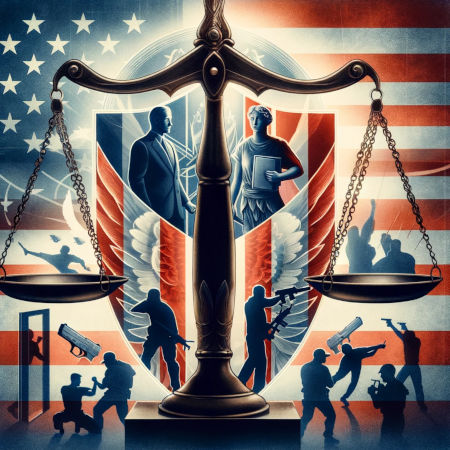
In addition to understanding the laws around self-defense, it's important to familiarize yourself with your rights regarding protection and safety. Being aware of your rights as a citizen can help you make informed decisions in high-pressure situations, allowing you to act confidently within legal boundaries.
While self-defense is a fundamental right, it comes with legal responsibilities as well. Initiation of violence, use of excessive force, or actions taken without legitimate fear for personal safety or the safety of others can lead to serious legal consequences.
By being well-informed about your rights and the laws surrounding self-defense, you're better equipped to handle potentially dangerous situations within the parameters of the law. Understanding these principles not only ensures your safety but also helps prevent unnecessary legal complications.
Preparing for Self Defense Scenarios
To effectively prepare for self-defense scenarios, it's essential to develop both mental and physical preparedness. A key aspect of developing a personal safety plan is understanding how to recognize and respond to potential threats in everyday situations. This requires cultivating situational awareness, which means being alert and attentive to your surroundings at all times.
Situational awareness involves being mindful of your environment, the people around you, and any potential risks or threats that may arise. It is about observing and assessing your surroundings to identify any behaviors or situations that may pose a danger, giving you the opportunity to take effective preventive action.
Psychological Preparedness
Psychological preparedness plays a crucial role in self-defense. Understanding how our mind and body respond to fear or danger is vital. It's important to practice remaining calm under stress and learning to manage fear effectively. This can involve breathing techniques, visualization exercises, and mental rehearsals of hypothetical threatening scenarios.
Being psychologically prepared doesn't mean being fearless; it means facing fear with controlled reactions. Think of it as knowing how to swim rather than avoiding water altogether. Being prepared mentally allows you to make clear decisions in pressured situations, leading to better outcomes.
Physical Preparedness
Physical preparedness often involves undertaking self-defense training to develop practical skills for protecting oneself in case of an emergency. Self-defense techniques can include learning how to break free from holds, striking vulnerable areas on an attacker's body, as well as grappling and ground defense maneuvers.
It's important for individuals to choose self-defense training that aligns with their physical capabilities and comfort levels.
Familiarization with Self-Defense Tools
In addition to physical training, individuals may also familiarize themselves with self-defense weapons such as pepper sprays, stun guns, or personal alarms. Proper usage of these tools should be learned through professional instruction or guidance from experts in the field.
Remember: Proactive steps like choosing safe routes when traveling alone, informing friends or family members about your whereabouts, limiting distractions while in public places are all part of developing physical preparedness.
By combining psychological and physical readiness through situational awareness, training, and familiarization with self-defense tools and techniques, individuals can enhance their overall preparedness for potential self-defense scenarios.
Equipping oneself with both mental astuteness and physical prowess can serve as the ultimate shield against unforeseen dangers. Stay vigilant, stay informed, and stay safe.
Add your comment now!
Post Comment
